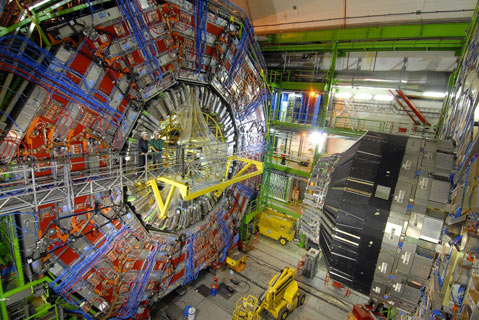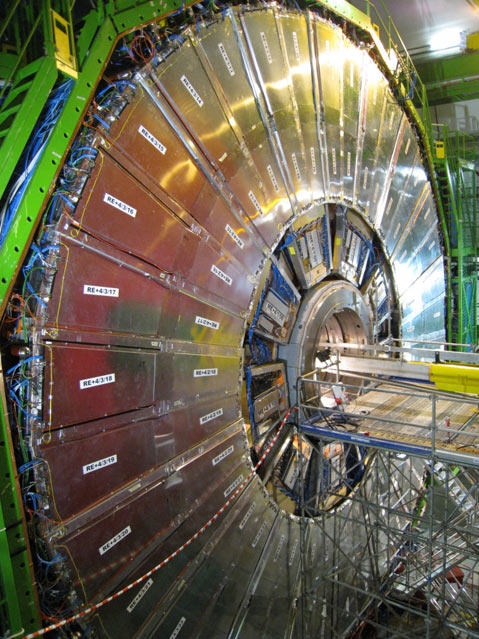UCSB Scientists Help Upgrade Particle Collider
Project Reaches Milestone Construction Phase

Four UCSB physics professors — Joe Incandela, Claudio Campagnari, Jeffrey Richman, and David Stuart — and their research teams have reached a milestone in their work to update the Large Hadron Collider (LHC), the world’s most powerful particle accelerator located underground at the border between France and Switzerland.
For the past five years, particle physicians and engineers from 14 international institutions have gathered at the European Organization for Nuclear Research (CERN) to design higher-intensity beams for the LHC in order to make it more powerful and more likely to reveal the universe’s underlying particles and processes. The machine works by firing proton beams at just under the speed of light into four hypersensitive detectors, which help identify the particles’ masses and patterns of collision.

CERN scientists, including UCSB professors, recently reached a milestone when their intensive improvements — known as the High Luminosity LHC project — moved from its design study phase to its construction phase. As Professor Incandela told The UCSB Current, “we basically agreed that the plans are solid, the costs are reasonable, and so we can move forward now to get them done and ready to install in roughly eight years from now.” Incandela is a physicist involved in the Compact Muon Solenoid (CMS) experiment, just one of the detectors located inside the 16-mile-long collider tunnel. In April, he earned membership to the National Academy of Sciences in part for his discovery of the Higgs boson elementary particle at the LHC.
However, UCSB’s CERN scientists aren’t resting on their laurels. Incandela, Campagnari, Richman, and their research teams are working on the High Granularity Calorimeter for the CMS detector, a significant upgrade to the previous calorimeter. Meanwhile, all four UCSB professors have been increasing that detector’s sensitivity. With additional improvements to the LHC accelerator complex, scientists predict the High Luminosity LHC will create ten times more collisions than its predecessor. As Incandela puts it, “Each time the beams cross — which happens about 33 million times each second — there will be as many as 200 pairs of protons colliding.”


